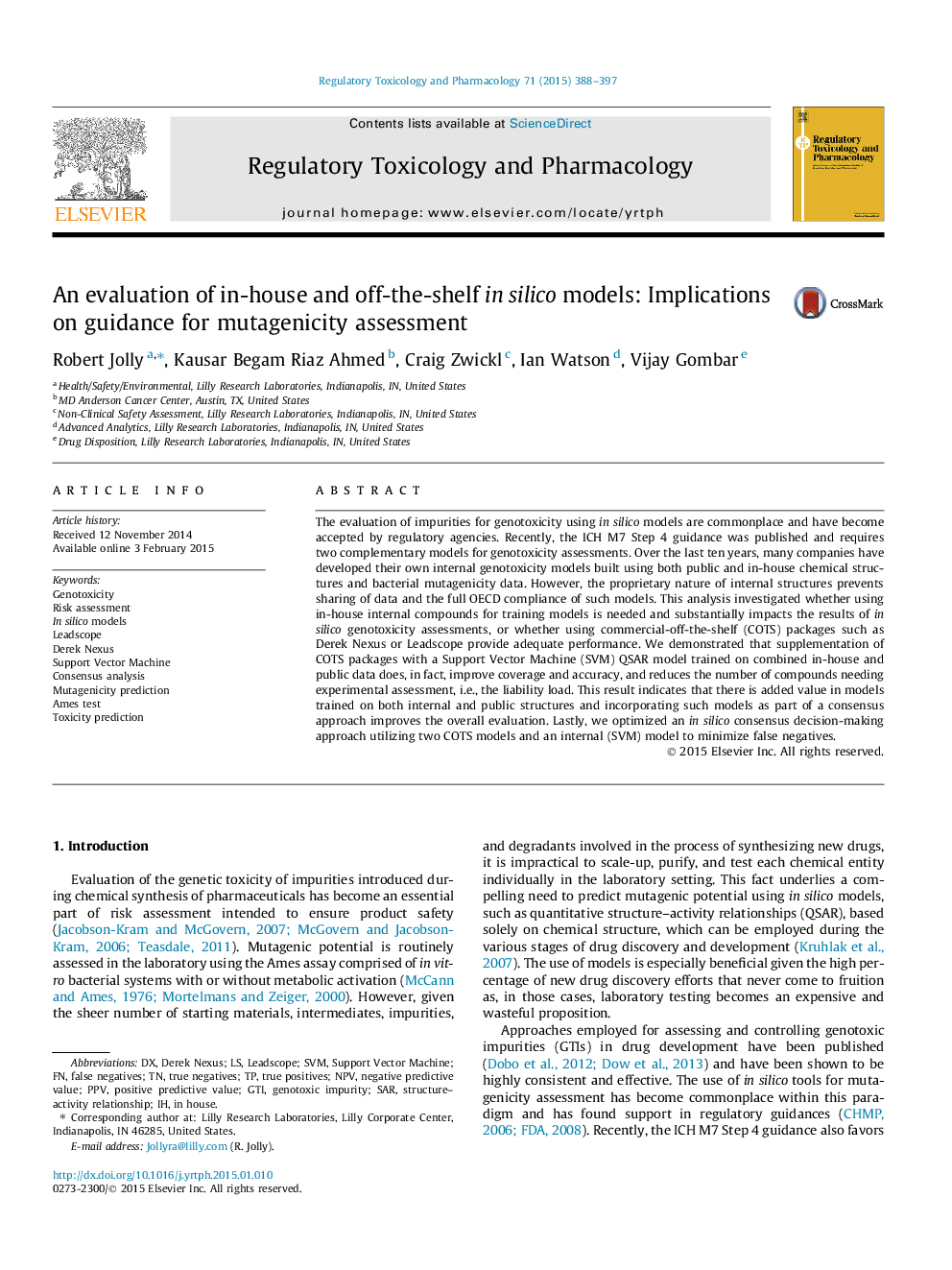| کد مقاله | کد نشریه | سال انتشار | مقاله انگلیسی | نسخه تمام متن |
|---|---|---|---|---|
| 5856648 | 1131980 | 2015 | 10 صفحه PDF | دانلود رایگان |
- ICH M7 requires two complementary models for in silico mutagenicity assessment.
- Adding an internal QSAR SVM model to two COTS models improved accuracy.
- A consensus of COTS models and an internal SVM model was optimized to decrease FN.
- Our GTI process will use an internal QSAR SVM model as part of our expert evaluation.
The evaluation of impurities for genotoxicity using in silico models are commonplace and have become accepted by regulatory agencies. Recently, the ICH M7 Step 4 guidance was published and requires two complementary models for genotoxicity assessments. Over the last ten years, many companies have developed their own internal genotoxicity models built using both public and in-house chemical structures and bacterial mutagenicity data. However, the proprietary nature of internal structures prevents sharing of data and the full OECD compliance of such models. This analysis investigated whether using in-house internal compounds for training models is needed and substantially impacts the results of in silico genotoxicity assessments, or whether using commercial-off-the-shelf (COTS) packages such as Derek Nexus or Leadscope provide adequate performance. We demonstrated that supplementation of COTS packages with a Support Vector Machine (SVM) QSAR model trained on combined in-house and public data does, in fact, improve coverage and accuracy, and reduces the number of compounds needing experimental assessment, i.e., the liability load. This result indicates that there is added value in models trained on both internal and public structures and incorporating such models as part of a consensus approach improves the overall evaluation. Lastly, we optimized an in silico consensus decision-making approach utilizing two COTS models and an internal (SVM) model to minimize false negatives.
Journal: Regulatory Toxicology and Pharmacology - Volume 71, Issue 3, April 2015, Pages 388-397
